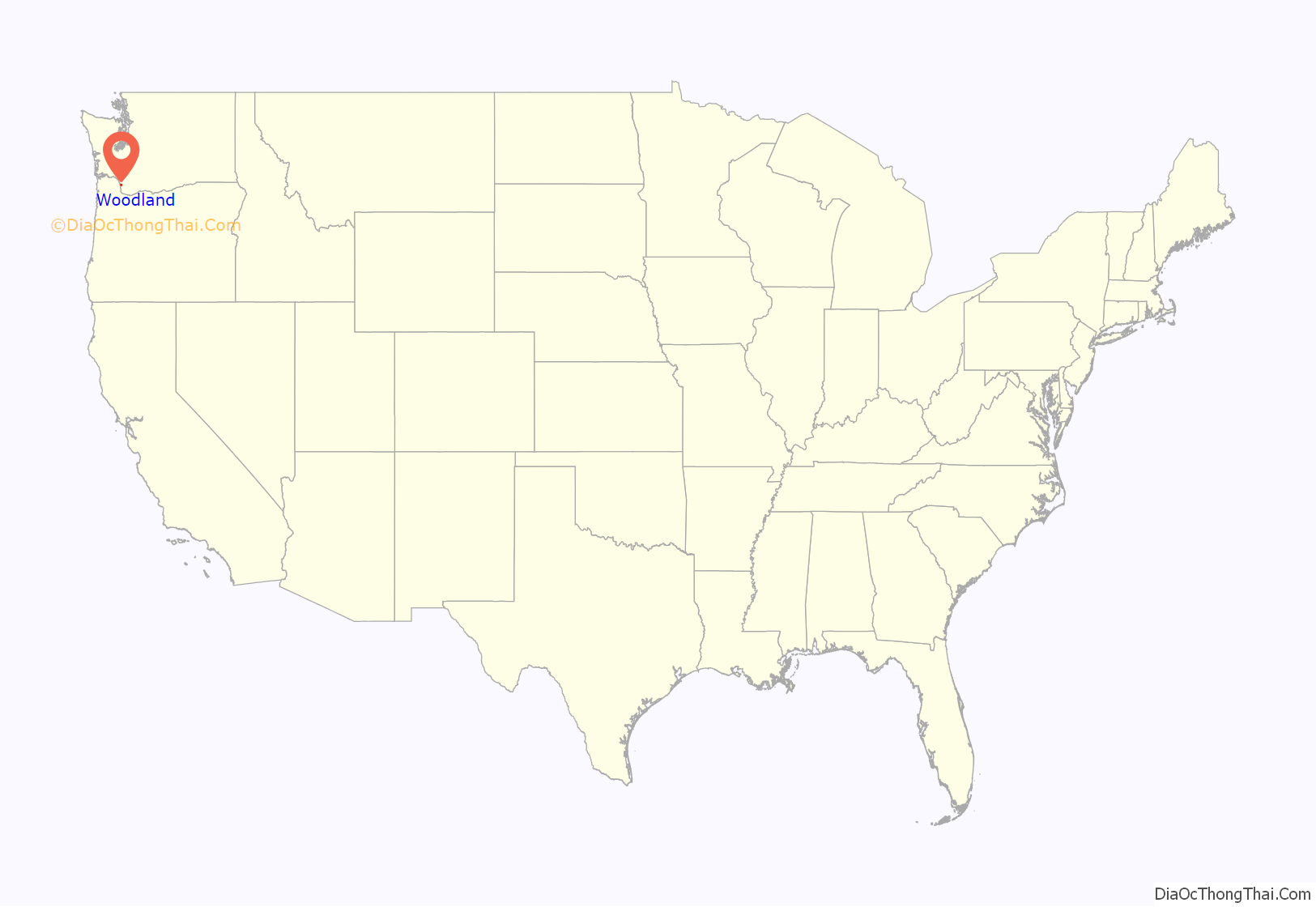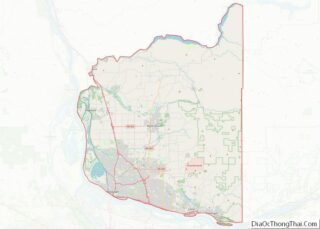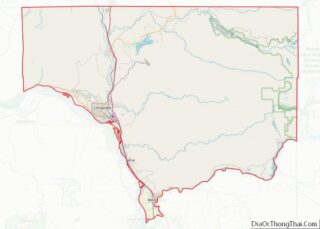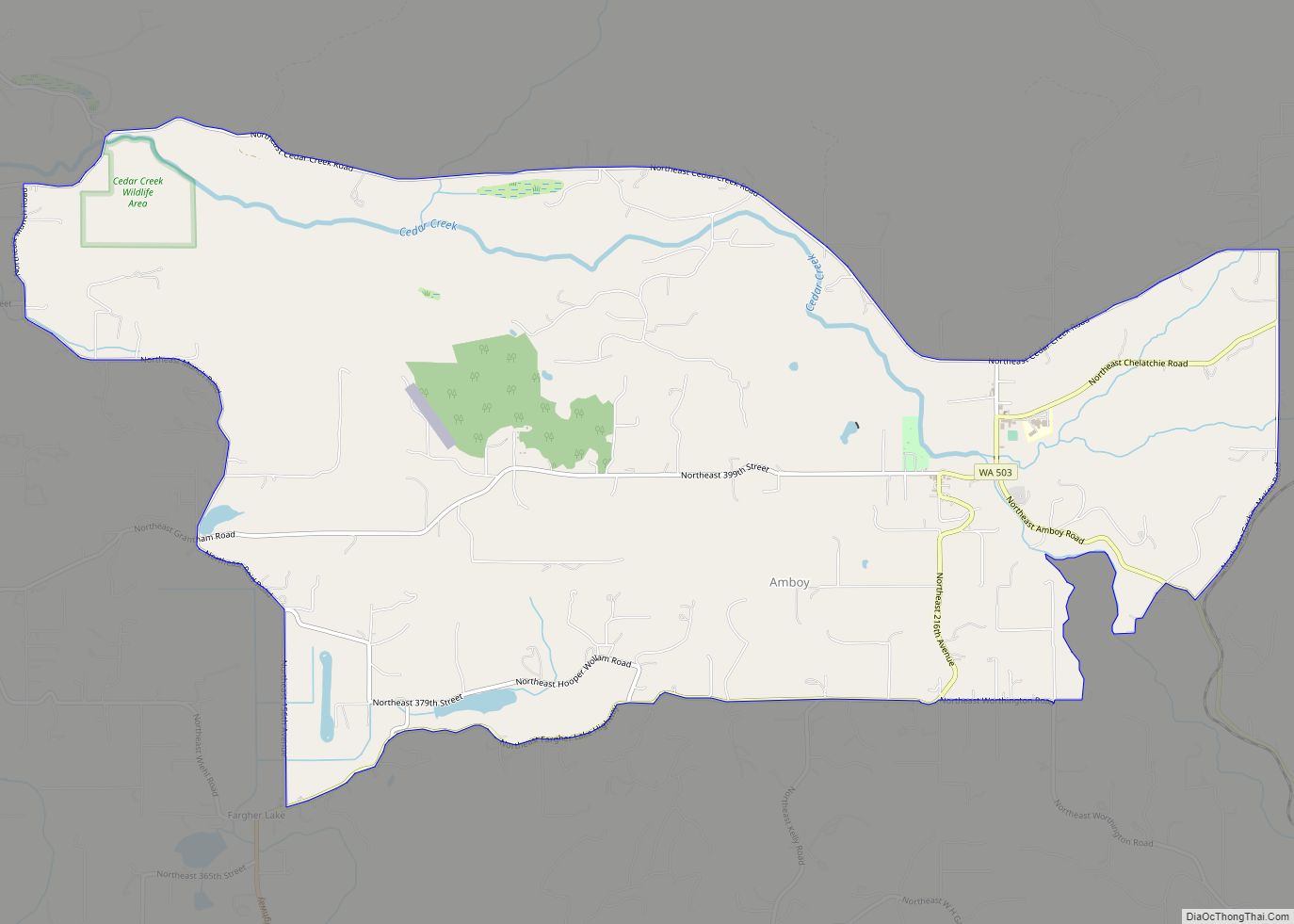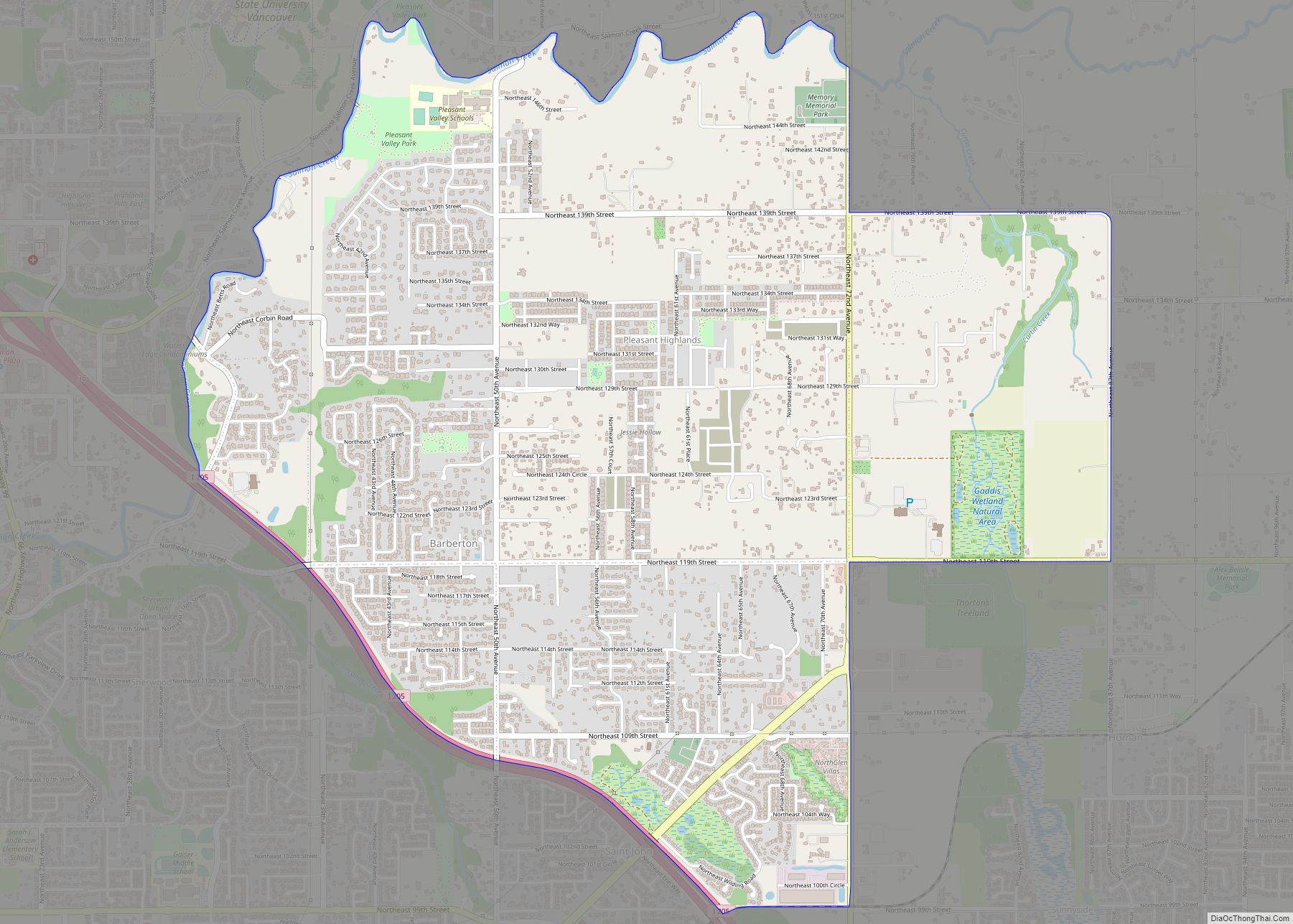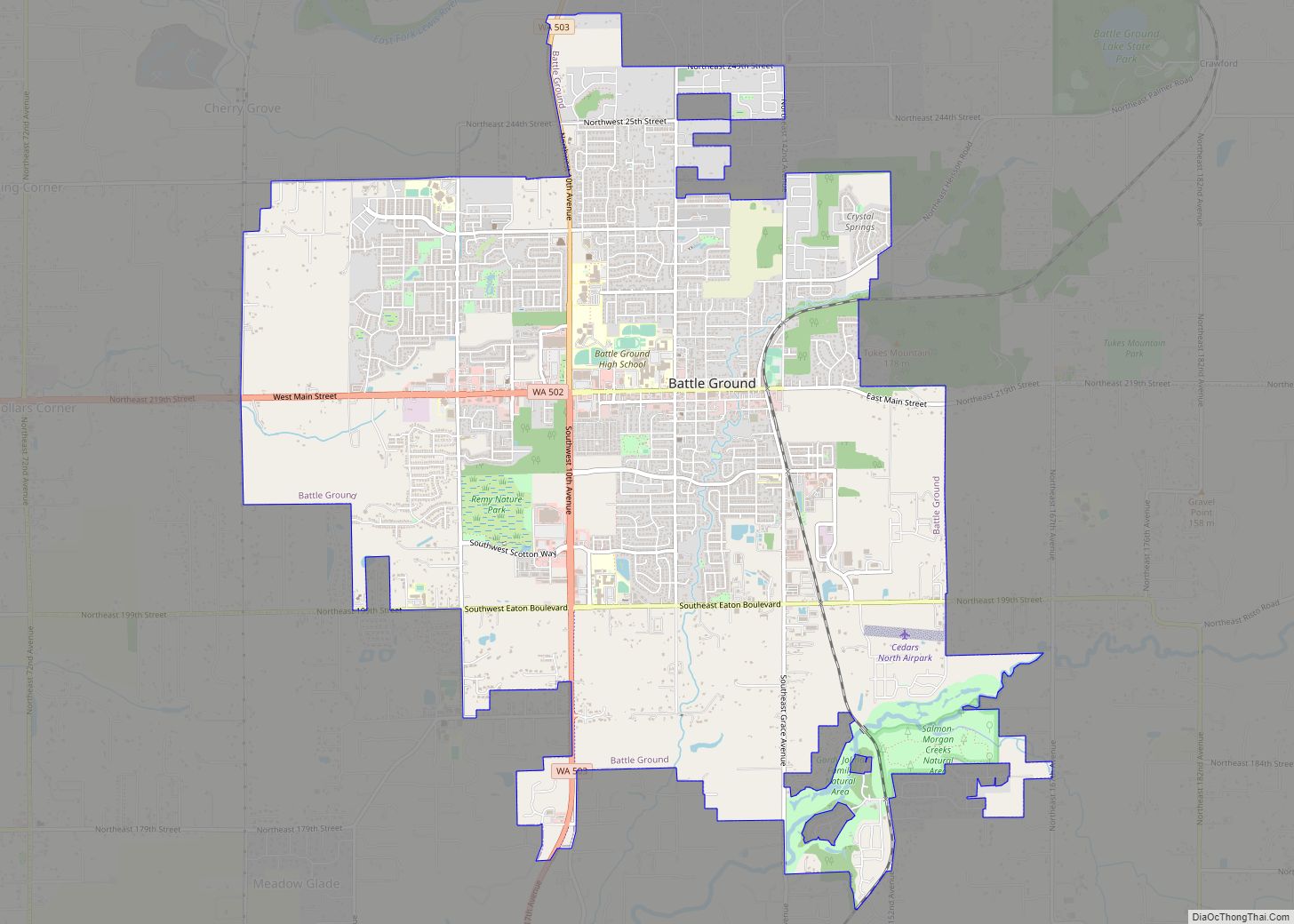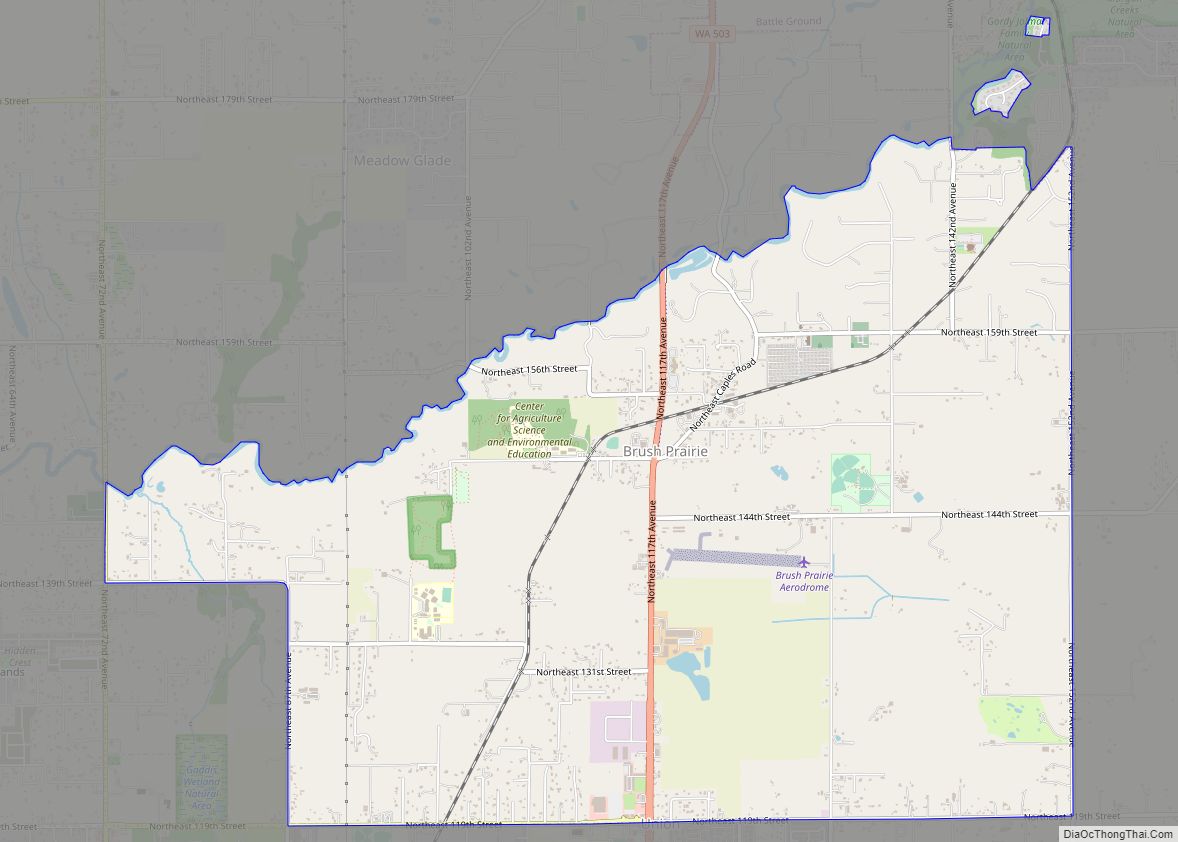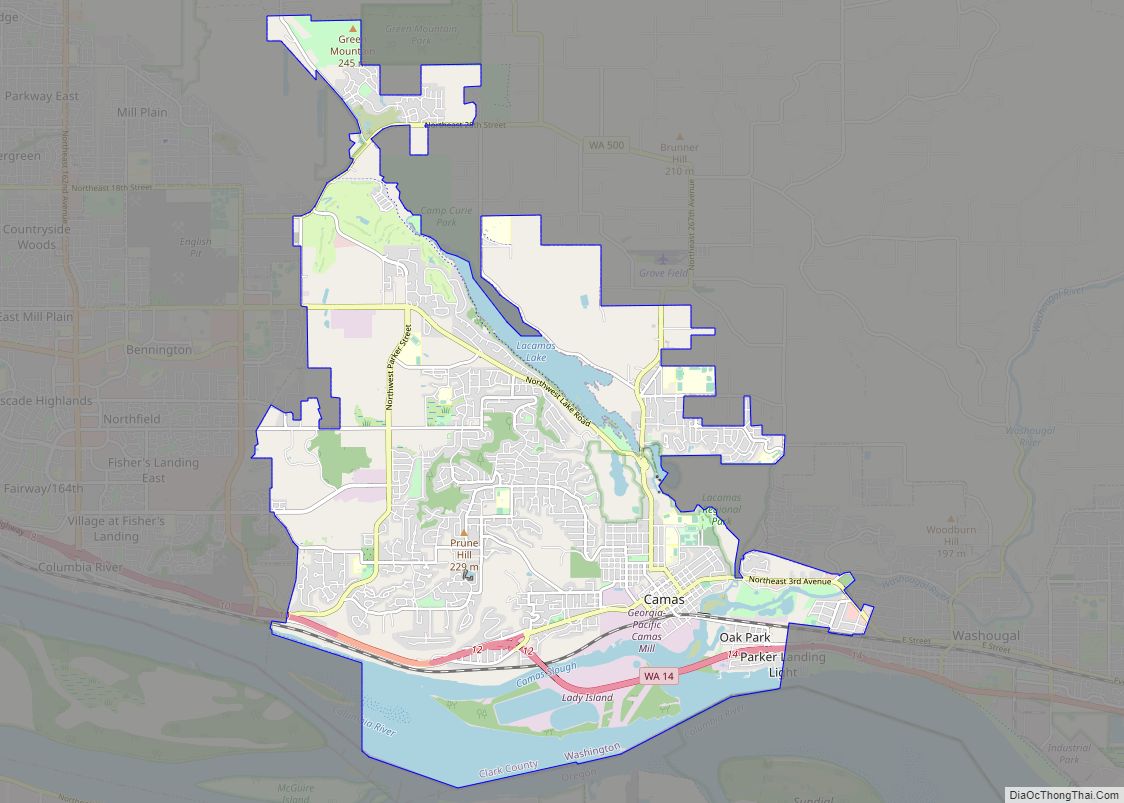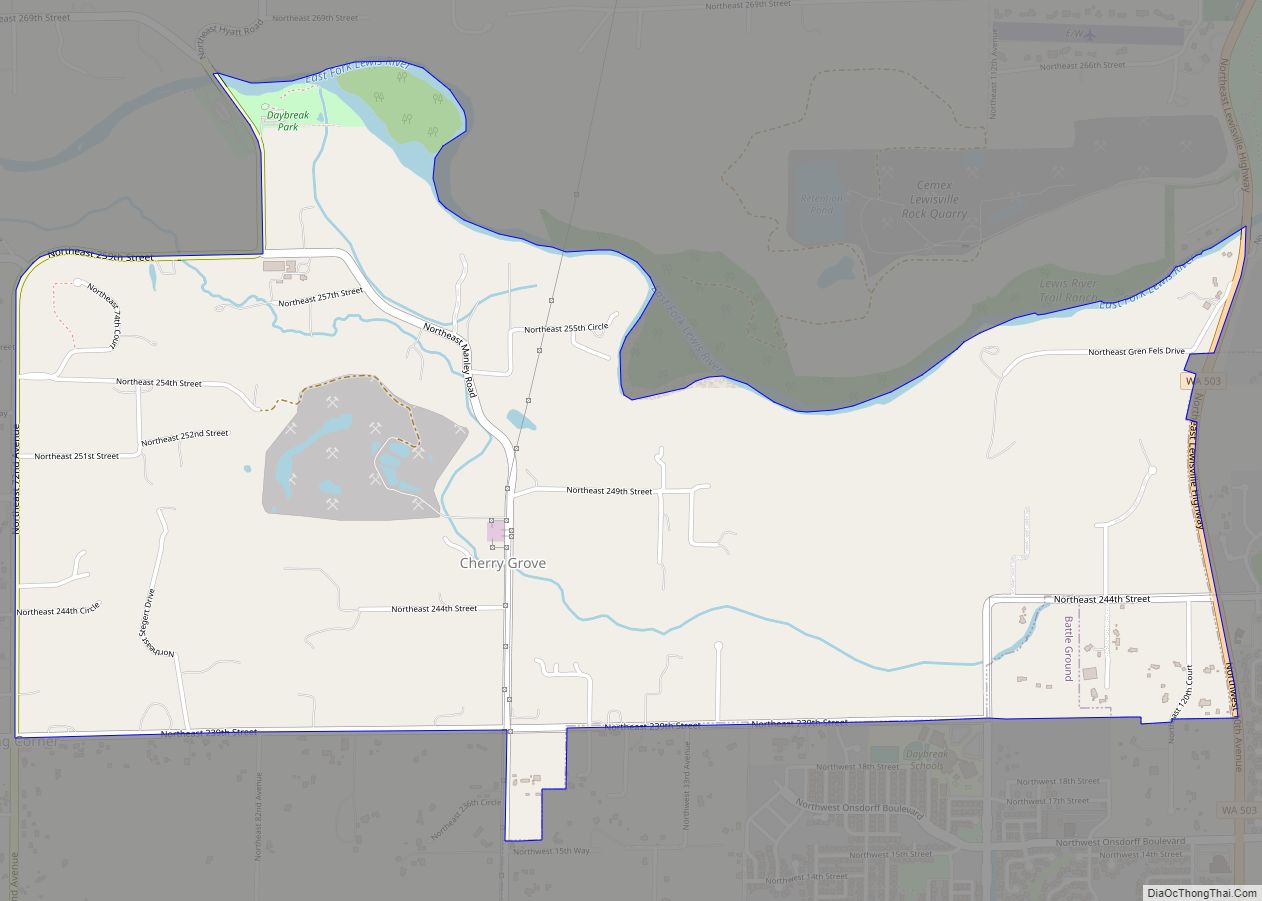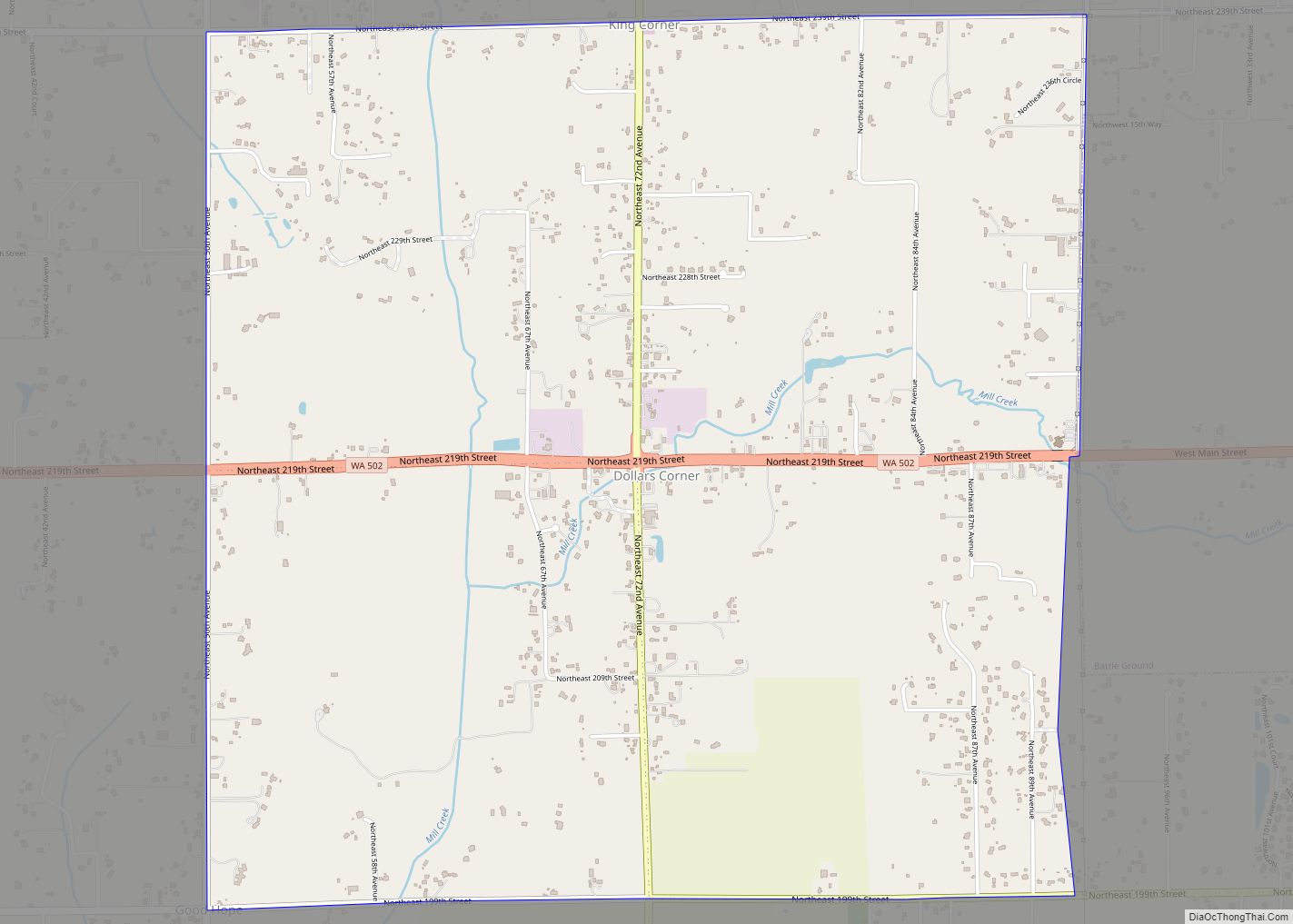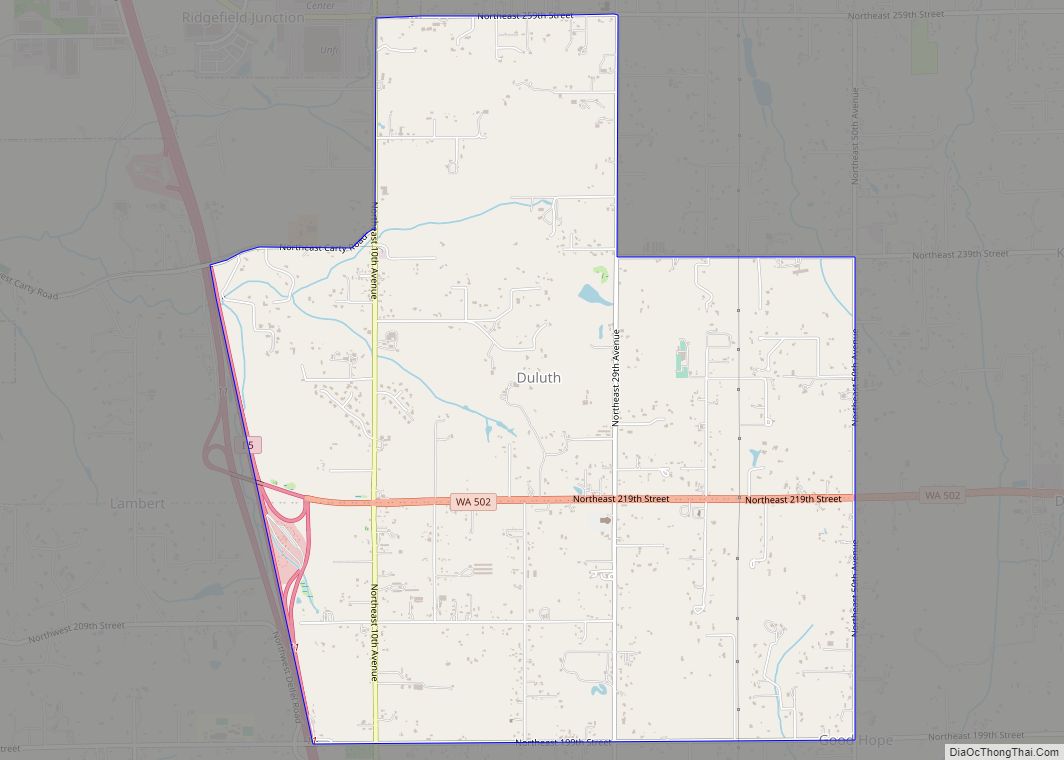Woodland is a city in Clark and Cowlitz counties in Washington, United States. Most residents live within Cowlitz County, in which the majority of the city lies. It is part of the ‘Longview, Washington Metropolitan Statistical Area’. The population was 6,531 at the 2020 census.
| Name: | Woodland city |
|---|---|
| LSAD Code: | 25 |
| LSAD Description: | city (suffix) |
| State: | Washington |
| County: | Clark County, Cowlitz County |
| Elevation: | 35 ft (10 m) |
| Total Area: | 4.25 sq mi (11.02 km²) |
| Land Area: | 4.11 sq mi (10.65 km²) |
| Water Area: | 0.14 sq mi (0.37 km²) |
| Total Population: | 6,531 |
| Population Density: | 1,579.52/sq mi (609.78/km²) |
| ZIP code: | 98674 |
| Area code: | 360 |
| FIPS code: | 5379625 |
| GNISfeature ID: | 1512812 |
| Website: | ci.woodland.wa.us |
Online Interactive Map
Click on ![]() to view map in "full screen" mode.
to view map in "full screen" mode.
Woodland location map. Where is Woodland city?
History
Hudson’s Bay Company retiree Adolphous Le Lewes (alternate spelling: Lewis) established a homestead at the mouth of what is today known as the Lewis River, in 1849 (The Lewis River is the namesake of A. Le Lewes, not Meriwether Lewis as is generally believed). Two Iowa families, related by marriage, came next: the Solomon Strongs filed a claim in September 1850 and the Squire Bozarths filed a claim in December of the same year. Bozarth built the first frame house in present-day Woodland and named it “Woodland Farm House.” Other early settlers include Columbia Lancaster, Milly Bozarth (wife of Squire), McKenzie and Jane Caples, and Brandt and Hans Kraft. After a few years, Christopher Columbus Bozarth (Better known as C.C., and the namesake for C.C. street in Woodland), a son of Squire Bozarth, opened a store and named it “Woodland,” after his father’s farm. Woodland eventually grew on the spot where the store was located.
Woodland was not the first trading center on the Lewis River bottoms. Pekin (now known as part of the Woodland Bottoms) deserves that credit. The Pekin store and Post Office was established in 1867 or 1868 by James Woods and F.H. Marsh. Pekin continued as the trading center until the Woodland store and Post Office were established. Woodland was more centrally located and on higher ground. Rarely did the June floods cover the streets of Woodland, but Pekin, built on stilts, was flooded nearly every June.
On March 26, 1856, the only recorded Indian attack occurred when some members of the Yakima tribe came down to burn out the settlers. Indian Zack, one of the few surviving Cowlitz tribe members, had already warned the settlers who evacuated to the Block House in St. Helens until the Yakimas returned to east of the Cascade Mountains. There was previously a monument to Indian Zack at a water fountain at Horseshoe Lake Park.
Woodland was platted by A.W. Scott on October 14, 1889, the same year that Washington gained statehood. It was incorporated as a town in 1906, and L. Hopf was the first mayor. In 1907, the first sewer system was begun, and the first telephone service contract was granted to Northwestern Telephone. At that time, there were daily stops by the steamers the Alarm and the Lucy Mason, as well as railroad service from Kalama to Portland. In 1913, the Lewis River bridge was built at Woodland. Prior to that time, there was only ferry service across the river. The present bridges where Interstate 5 crosses the Lewis, and the dike creating Horseshoe Lake were begun in 1940. In 1925, the Woodland Fire Department was organized and a fire station was erected. The first hotels and restaurants were built in the 1890s. The Woodland Grange now occupies the building that was the Hobb Hotel.
In 1948, Woodland experienced one of the greatest floods in its short history, with “Old Town Woodland” being one of the hardest-hit areas. Woodland experienced another great flood in 1996, which mostly affected the Northeast residential section of the city. President Bill Clinton visited the city during the flood of 1996, using the Woodland High School football field as a landing pad for his helicopter.
Woodland was officially incorporated as a city on March 27, 1906.
Woodland is perhaps best known as the home of Hulda Klager (1863–1960), who was a prolific breeder of lilacs. Known as the “Lilac Lady,” Klager (née Thiel) was long the pride of Woodland. She immigrated from Germany to Wisconsin in 1865, when she was just two years old, and came West when her family bought a farm in Woodland. Later she married and settled down on the family farm. When a friend gave her a book about Luther Burbank, she began creating flowers, hybridizing new varieties of roses, dahlias, even apples, and lilacs in particular. By 1920 she had created such a magnificent array of new hand-pollinated lilacs that she opened her garden on Lilac Week every spring for visitors. The floodwaters of 1948 rolled over her garden, destroying every shrub and hand-pollinated lilac. The loss grieved those who visited her garden or who had purchased her lilacs. From all over the Northwest, people sent starts of her lilacs from their own gardens. By 1950, at the age of eighty-seven, Klager, who loved flowers and who had been honored by the state of Washington as well as such organizations as the nationally famous arboretum at Cambridge, Massachusetts, again opened her home for Lilac Week. After her death in 1960, the Woodland Federated Garden Club, shocked that the garden might be bulldozed for industry, succeeded in raising money to buy it and have it declared a state and national historic site.
In 1964, her house and lilac gardens were saved from being torn down to make room for an industrial site, and are currently maintained as a state and National Historic Landmark by the Lilac Society.
The Cedar Creek Grist Mill, a National Historic Landmark, is located near Woodland.
Woodland Road Map
Woodland city Satellite Map
Geography
Woodland is located at 45°54′40″N 122°44′27″W / 45.91111°N 122.74083°W / 45.91111; -122.74083 (45.910973, −122.740828).
According to the United States Census Bureau, the city has a total area of 3.48 square miles (9.01 km), of which 3.37 square miles (8.73 km) is land and 0.11 square miles (0.28 km) is water.
Climate
This region experiences warm (but not hot) and dry summers, with no average monthly temperatures above 71.6 °F (22.0 °C). According to the Köppen Climate Classification system, Woodland has a warm-summer Mediterranean climate, abbreviated “Csb” on climate maps.
See also
Map of Washington State and its subdivision:- Adams
- Asotin
- Benton
- Chelan
- Clallam
- Clark
- Columbia
- Cowlitz
- Douglas
- Ferry
- Franklin
- Garfield
- Grant
- Grays Harbor
- Island
- Jefferson
- King
- Kitsap
- Kittitas
- Klickitat
- Lewis
- Lincoln
- Mason
- Okanogan
- Pacific
- Pend Oreille
- Pierce
- San Juan
- Skagit
- Skamania
- Snohomish
- Spokane
- Stevens
- Thurston
- Wahkiakum
- Walla Walla
- Whatcom
- Whitman
- Yakima
- Alabama
- Alaska
- Arizona
- Arkansas
- California
- Colorado
- Connecticut
- Delaware
- District of Columbia
- Florida
- Georgia
- Hawaii
- Idaho
- Illinois
- Indiana
- Iowa
- Kansas
- Kentucky
- Louisiana
- Maine
- Maryland
- Massachusetts
- Michigan
- Minnesota
- Mississippi
- Missouri
- Montana
- Nebraska
- Nevada
- New Hampshire
- New Jersey
- New Mexico
- New York
- North Carolina
- North Dakota
- Ohio
- Oklahoma
- Oregon
- Pennsylvania
- Rhode Island
- South Carolina
- South Dakota
- Tennessee
- Texas
- Utah
- Vermont
- Virginia
- Washington
- West Virginia
- Wisconsin
- Wyoming
